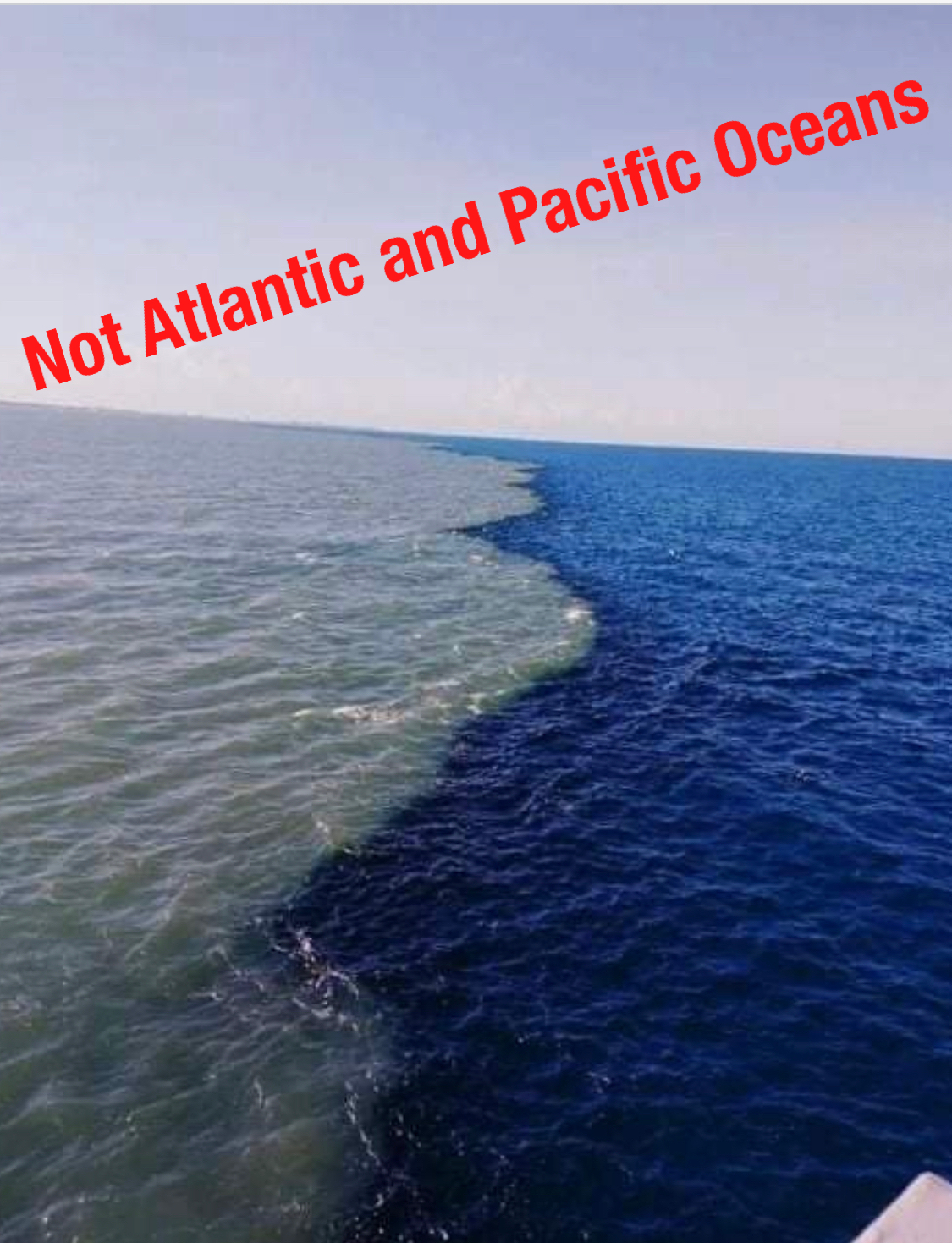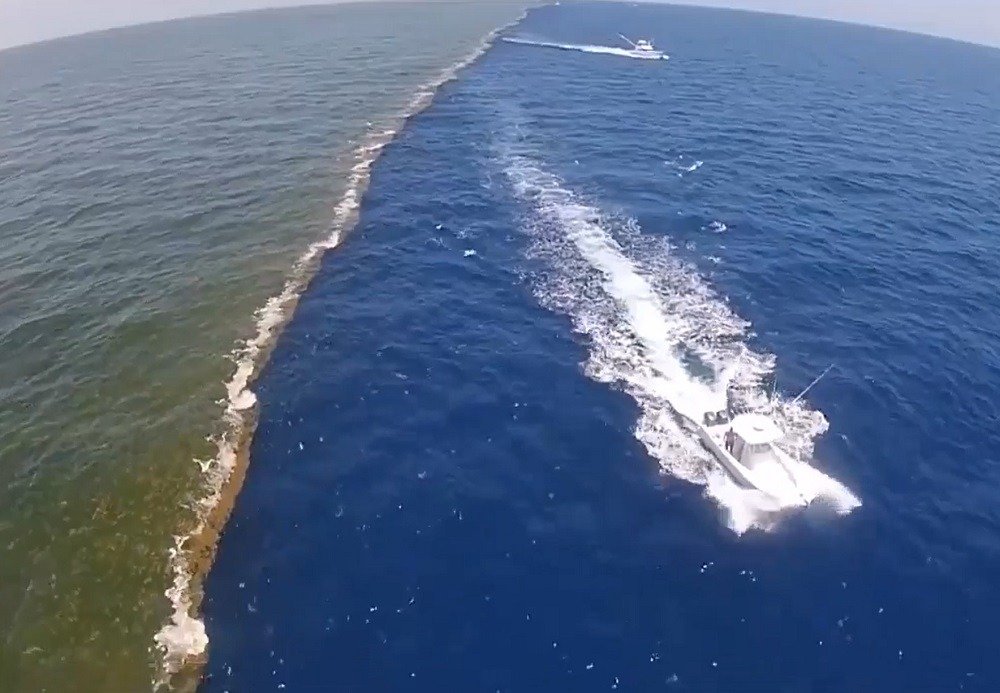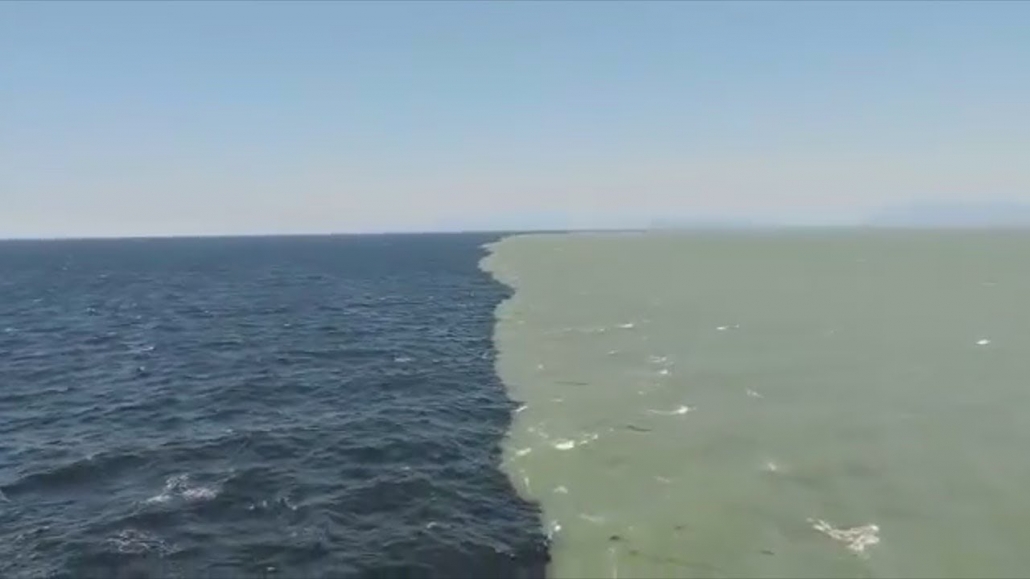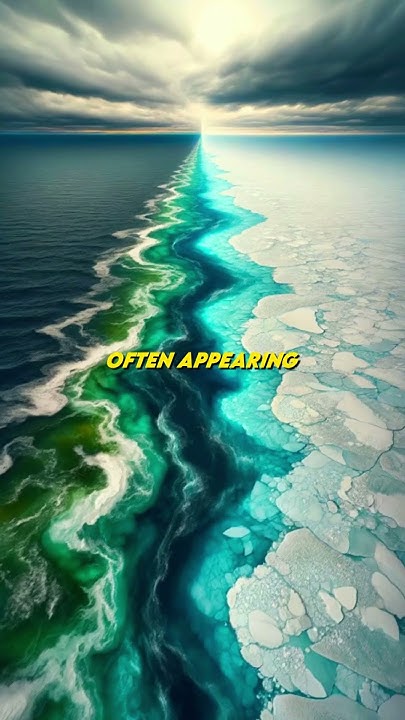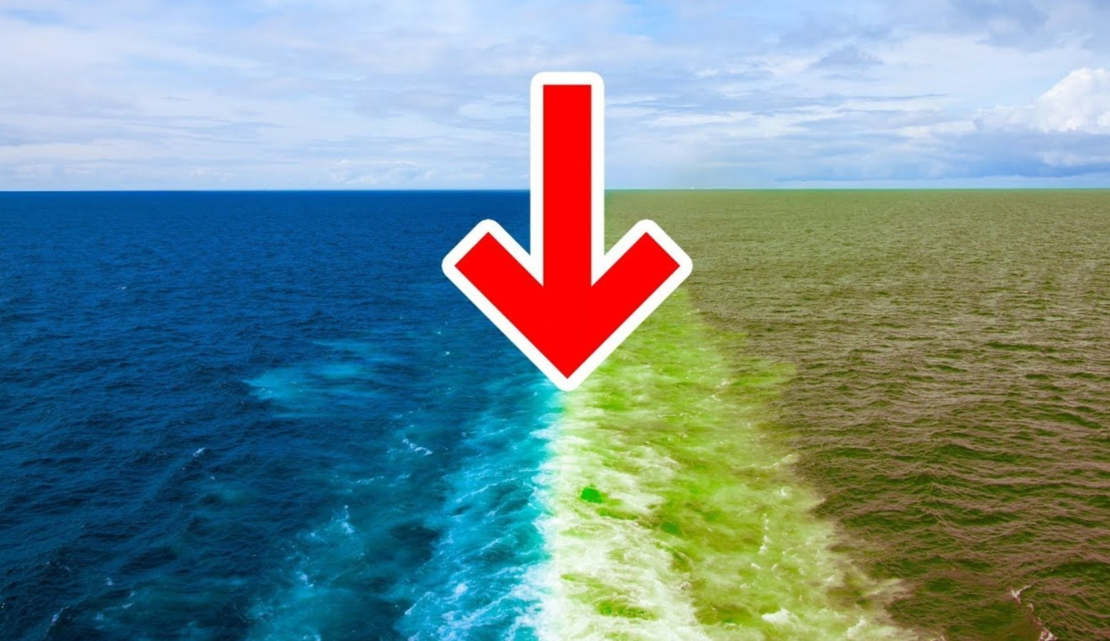What Two Oceans Meet But Don't Mix

Imagine two giant swimming pools, side-by-side. One is crystal clear, a sparkling turquoise. The other? A deep, mysterious indigo.
Now, imagine those pools touching, but the water from each… just… refuses to blend. Sounds like a cartoon, right?
Believe it or not, this isn't some animated fantasy. It happens in real life where the Atlantic and Pacific Oceans meet!
A Clash of the Titans (of Water!)
It's a sight that’s captivated sailors, scientists, and even regular folks armed with cameras. This phenomenon occurs in various locations, but one of the most famous is off the coast of Alaska.
Here, the darker, glacial waters of the Pacific bump up against the lighter, saltier Atlantic. They create a visible line, a watery border dispute, if you will.
But why this watery standoff? Why don't they just, you know, mix?
Different Strokes for Different Oceans
While the simple answer is "density differences," let's break that down. Think of it like salad dressing. Oil and vinegar just don't want to mingle without a good shake, right?
The oceans are similar. The Atlantic is typically saltier and denser. This is due to higher evaporation rates and differences in water temperature.
The Pacific, especially in regions near glacial melt, tends to be fresher and less dense. Therefore, they resist mixing.
Temperature also plays a major role. Colder water tends to be denser than warmer water, further contributing to the separation.
It's not a complete standstill, of course. There *is* some mixing. But it's a gradual process that happens over a much larger area than that distinct line we see.
More Than Just a Pretty Picture
These non-mixing zones aren’t just a visual oddity. They impact marine life. The different densities and salinities create barriers for certain species.
Some creatures prefer the saltier, denser waters. Others thrive in the fresher, less dense zones. It's like having different neighborhoods in the ocean!
This separation can also influence weather patterns. The distinct water masses can affect temperature gradients and currents, leading to localized weather effects.
“The ocean is a mighty harmonist.” - Joseph Conrad
Conrad might be surprised, but this instance indicates a very unique state of "harmonious" co-existence!
So, the Next Time You See a Picture…
The next time you stumble upon a photo or video of these two oceans refusing to blend, remember it’s not magic. It’s science!
But it’s also a reminder of the incredible complexity and beauty of our planet. Nature continues to surprise and amaze us.
It also demonstrates a surprising principle. Sometimes, even when we're side-by-side, a little bit of difference is all it takes to create something truly unique, right?
And that's worth celebrating, even if it's just two stubborn oceans refusing to play nice.


